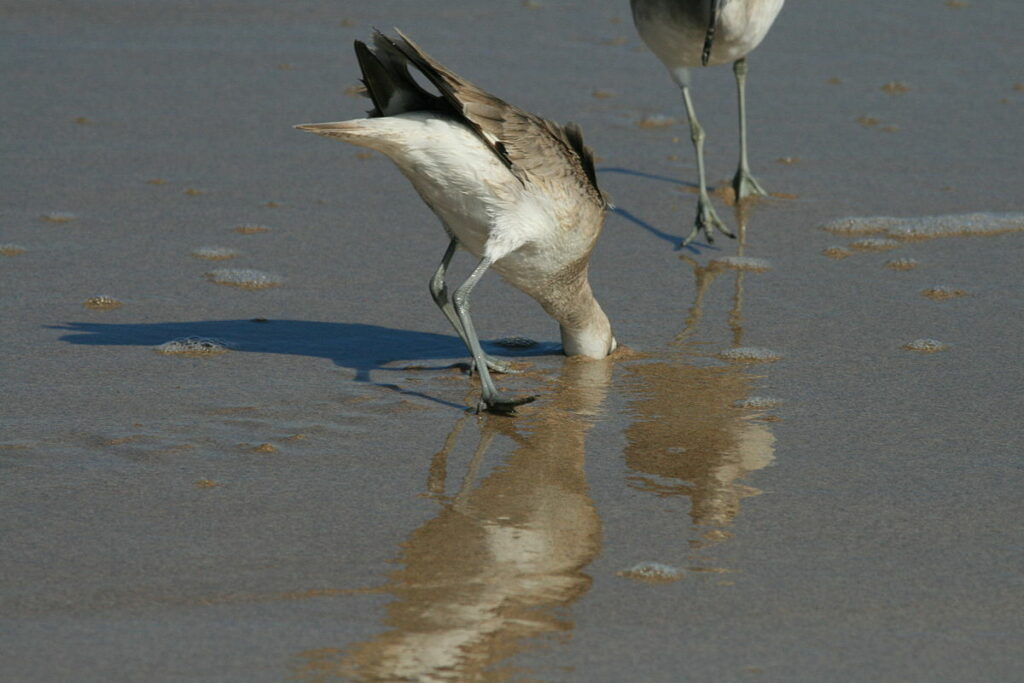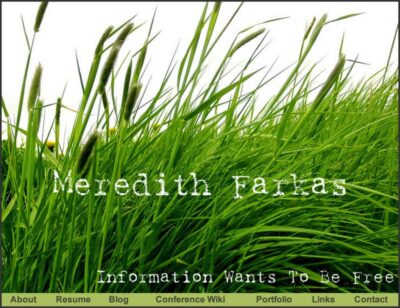I am a huge fan of research log and research process reflection assignments. Because research is a means to an end (the paper) and because people are often doing it in a rush, there is little reflection on process. What worked? What didn’t? What can I take from this experience for the next time I have to do something similar? Because this reflection is not usually written into the curriculum, students don’t learn enough from their mistakes or even the good things they did. Having a research log helps students become better researchers in the future and, most importantly, helps them to develop a “system” that works for them.
I definitely remember the many years that I did not have a system for research and writing. Most reference librarians have probably encountered a frantic student who realizes just before his/her paper is due that s/he can’t track down some of the sources they need to cite. Yeah, that was me (though I would have been too embarrassed to come to the reference desk). I probably never followed the same path twice and wasted a lot of time doing things over again because I wasn’t organized. Looking back, I wish a nice librarian had provided an session for me on developing a system for finding, organizing, reading and synthesizing information, because I wasted a lot of time and sweat needlessly.
Now that I have a system, research and writing is much simpler. But being the geek that I am, I’m always interested in improving and refining my process. I’m very interested in how people conduct research online and do their writing these days, especially people who are tech-savvy and information literate. I thought maybe if I shared my own strategies, it might inspire other bloggers to share theirs. Research and writing are often such solitary processes so we don’t often get to see how others approach similar challenges. I want to lift the veil on my own approach. I don’t know if this will be interesting to anyone else, but I’d love to encourage others to share their own tools and strategies so we can learn from each other.
Update: I should add that when I’m not working on a specific writing project, I use delicious and Instapaper to collect items of interest I find. delicious I use for collecting things that may be useful in the future and Instapaper I use for collecting articles and blog posts that I definitely want to read in-depth when I have time (and I often save those things to delicious as well). I have frequently mined my collections in delicious for writing projects later on.
When I get an idea for research/writing project, I start with simple mindmapping. I don’t use anything fancy for that part of the process (though there are plenty of cool online mindmapping tools) — just a piece of paper or a word processing program (whatever I’m in the mood for using at that moment). I brainstorm everything about that topic that I might potentially be interested in. I then turn that mindmap into a research question/topic statement and an outline. That gives me a strong sense of what sort of research I might be looking for. I tend to cast a wide net in my research — information science-related databases, databases in related disciplines (psychology, education, computer science, business, etc.), multidisciplinary databases, Google Scholar, blogs, organizational websites, etc. Anything that looks good I grab the PDF of and throw it into a folder in Dropbox so I can access it from anywhere. If a PDF isn’t available, I print the page as a PDF (thanks PDF Creator). If it’s not an article but a cool example, I’ll make note of it (and its URL) in a separate Word file that I save in the same folder.
Usually, whatever I find has expanded my perspective on the topic, so I tend to go back and modify my outline then. I then see if I’ve found useful material on all areas I’d brainstormed. If not, I might expand the search. Sometimes I discover that certain topics simply aren’t fruitful areas of inquiry and I remove them from my outline.
So now I usually have a tremendous number of PDFs in a folder in Dropbox. I then take my iPad and load all of them up in iAnnotate. There are a lot of annotation tools for iPad and I’ve tried a few of them, but I was most pleased with iAnnotate. Your mileage may vary. (There was an awesome guide to PDF annotation tools for iPad published recently, but I can’t seem to track it down now.) iAnnotate works beautifully with downloading from and uploading to Dropbox, so it’s a perfect fit for me. When I wrote my book, Social Software in Libraries, I printed out just about everything I read. I’ve never been able to do deep reading on a computer so I ended up with an obscene amount of paper that I kept for many years and finally gave up on the fantasy that I’d ever use them again. When I got an iPad, I was hoping to find something that would allow me to read an article, highlight text, and take notes on the document itself. iAnnotate fits the bill and puts all of my reading at arm’s reach. I can read at lunch, before meetings, while waiting at the doctor’s office, in bed, etc. It has definitely boosted my productivity.
A semi-related aside: Last weekend, my son was watching the movie, Babe, and I was reading articles for a book chapter I’m currently writing. My son climbed up into my lap and and I cuddled with him while reading scholarly articles on M-learning. I stopped and thought “man, if this isn’t the picture of the tenure-track mother I don’t know what is!” Sigh…
I first quickly skim through each article and decide if it’s worth reading and annotating. If not, I remove it from iAnnotate and from Dropbox. If it is, I read and mark it up. When I’m done with all of them, I upload back to Dropbox so the annotated versions of the articles can be read anywhere.
Next stop, Mendeley. For those who don’t already know about it, Mendeley is a desktop citation management tool, similar to Zotero in functionality (I like Zotero a lot too, but found Mendeley a better fit for me). Additionally, it’s an excellent social network for scholars and can also function as a tool for discovering additional research. I usually search Mendeley for my topic(s) as well because it’s searching a library of things that other scholars thought worth adding to their own Mendeley library (similar logic to searching del.icio.us in addition to Google). Now that I’ve got the definitive list of what articles I plan to use and they’re marked up in my Dropbox folder, I import all of the files from that folder into Mendeley. There are obviously many points at which you could pull stuff into Mendeley. You could do it directly from the database/website you’re getting the article from. I just like to do it at this point because I get the annotated PDFs into Mendeley and only the ones I might need to cite.
Mendeley usually does a decent job identifying the bibliographic information from the PDF, but invariably, I have to do a little work on it. One thing I love about Mendeley is its PDF reader within the program itself (which actually has annotation features too). I pull up each PDF and check it against the citation info Mendeley created (they are displayed side-by-side). I then fix any errors in the citation. If I’m using books or websites, I add them to Mendeley as well at this point (using the Mendeley web importer for website and that with WorldCat Local for books). I then create a bibliography of all of these resources in MS Word. Using this file, I now copy and paste anything I highlighted from each article into the document under the citation for that article. I also add useful notes from books as well. I print this out and use it to flesh out my original outline. The document helps me to easily remember where I got ideas from rather than looking at 20, 30 or 60 different sources. My outline now has authors names next to each topic, reminding me of what I should look at when I’m at that point in my writing. I print the outline as well.
As I write my lit review, I use the outline, the document with all of the highlighted content, the document with the cool examples, and the articles themselves. I use both my iPad and my computer at this point. I write on my computer (in MS Word — I know there are cool writing apps that prevent you from being distracted, but I do fine with Word), but I access the articles from my iPad using the Mendeley app. The Mendeley app is great for accessing your citations and the articles themselves on the go (note: it also works on an iPhone). I use Mendeley’s Word plugin to insert citations and format the bibliography.
And that’s basically it! As far as tools, Mendeley and iAnnotate have really improved my writing and research experience, but more important than that is the fact that I have a system. I’ve discovered a way of organizing my thoughts, finding and organizing sources, and bringing the two together that works for me. We’re all different. We all have quirks that influence our strategies. My major quirk is that I write better in bed than anywhere else. Sitting up at a desk and doing a lot of writing is incredibly difficult for me, so you won’t often find me doing substantial work on an article in my office at work. I have a friend who writes best when we writes in longhand. For him, perhaps, something like LiveScribe, a handwriting app for iPad, and/or a PDF annotation tool that is focused on handwritten annotations would work well.
So I’m curious; what’s your process? What tools help you do research and write? What research or writing quirks so you have and how has that influenced the system you’ve chosen? While I have a system, it is constantly evolving (I only switched from Zotero to Mendeley this past summer) and I’m always looking for better ways to do things. Aren’t we all?




Pingback: Systems/layers: research and writing workflow | Semantic Library
I haven’t been writing many formal articles recently. (I’m writing the first one in quite a bit right now.) For the projects, presentations, and workshops I’ve been doing, I don’t need a full lit review, so I’ve moved away from the citation managers in the my own work. I’ve been using Evernote, http://www.evernote.com/, because it’s so easy to catch examples on the web with their bookmarking and screen capture tools. They have an app or version for nearly every platform. I also use it to take notes in meetings, for brainstorming, and for lists. (I sound like an advertisement!)
I like the combination of Mendeley and Dropbox–do you link the Mendeley record to the Dropbox file? Or do you have some other organizational scheme?
I’m surprised Diigo’s social bookmarking & annotation mechanisms aren’t part of your system! I like social features for crafting a positive online identity for students as they document their learning:
http://blog.learnstream.info/post/10863713759/getting-all-as-in-school
Hi Thomas! I added to my post that I do use delicious and Instapaper for saving resources when I’m not working on a specific project. I mainly use delicious over Diigo because I’ve been using it forever and it works fine for my needs. That said, if delicious ever went away, I would switch to Diigo (and during that “delicious is going away” scare last week, I did move my stuff over and played around with Diigo).
Evernote is such a great tool, Rebecca, but somehow I haven’t found a way to make it work for me. But I’m playing with adding resources from my various “Ego feeds” to Evernote automatically right now using IFTT, mainly just as an experiment.
Yes, what I do is link the folder in Dropbox to Mendeley. That way, if I add anything in the future to that folder, it will automatically be added to Mendeley.
Pingback: Lifting the veil on my “system” « Another Word For It
Thank you for sharing your process. I’m sending this to my college-age daughter to encourage self-reflection on her research efforts. I’ve also linked to it from my library’s blog as well.
Pingback: How I write?
I’m not doing any academic writing these days, but I used to like to build a spreadsheet to organize my sources for a paper. I’d include columns for author, year, complete reference, keywords (related to my paper), my own summary of the paper, and any specific quotes (with page numbers). I’d fill this in as I read, then sort by various columns when deciding how best to present the info in the paper (chronologically, by author, by sub-topic). It really helped me identify common threads in the various readings, and get an overview of my subject before fitting it all together. I would also import the citation information into a reference manager to make use of citation plugins, but the spreadsheet would be my main note organizer.
I’m wondering how iAnnotate interacts with Evernote. Did you try?
Hi Lin! I haven’t used Evernote that much and haven’t really found a use for it in my own research system, so I’m not sure if it integrates with iAnnotate. Certainly there are a number of annotation tools that explicitly do work with Evernote.
Pingback: Coming out from under. « Archive 34
Pingback: שיקוף חשיבתי (17.4.2012) | shuvamalka
Pingback: A.K.A. My “System” | Meta
Pingback: Week 3: Bookmarking and Research | Project Connect
Pingback: Week 3: Bookmarking and Research | Project Connect
Pingback: A.K.A. My "System" « Information Seeking
Pingback: Biblioblogosphere Content (Free Choice) | cybrariansam
Pingback: Biblioblogosphere Content (Free Choice) | cybrariansam
Pingback: Tech Roundup « LibraryTechTalk